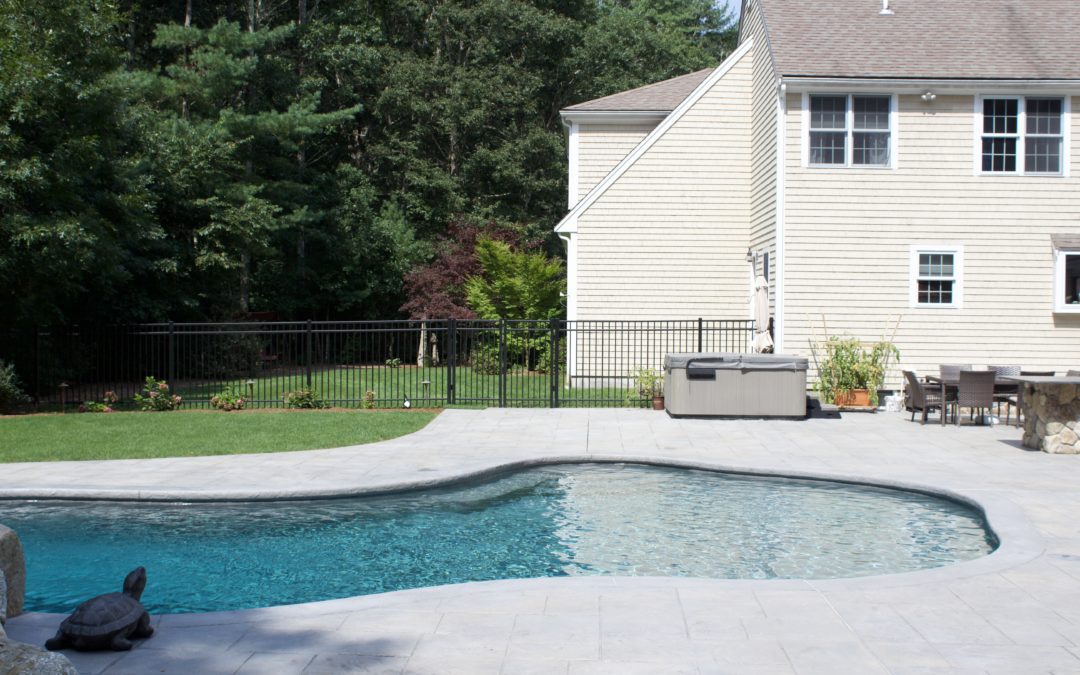The largest part of pool maintenance is cleaning out the dirt and debris from the bottom. This is normally done by manually using a pool vacuum if you do not have an automated cleaner. If your pool has an automatic cleaner such as a Polaris or a PCC2000 in-floor cleaner, you might chose to manually vacuum less frequently. You should always mainetain a regular schedule for keeping up with cleaning.
Assemble the Equipment
Connect your adjustable vacuum pole to the vacuum head. Then connect the vacuum hose to the vacuum head.
Submerse the Vacuum Hose into the pool
Before attaching vacuum hose into your skimmer, you must remove all the air out of the hose. If you don’t, you will suck air into your pump and it may cause the pump to lose prime. To get all of the air out of the hose, drop the hose into the pool, extend the pole, and put the head into the water. With the vacuum head in the water, bring the other end of the hose to one of the return lines. Grab hold of the free end of the hose and sink it into the water over one of the pool returns. This will force water into the hose and the air out of the other end.
Connect the hose to the Skimmer
After getting all of the air out of the line, attach the free end of the hose into the suction line in the bottom of the skimmer. It is best to put the hose over the deck and into the skimmer to prevent it from floating out of the water. To do this without allowing air back into the hose, first remove the skimmer cover on the deck and then cap the open end of the hose with the palm of your hand before removing it from the water. Keep the end blocked until you put it back into the water that is inside the skimmer. This process can be a little tricky, but with practice, you should be able to do it in about 15 seconds!
Properly Adjust the Valves
When you are vacuuming from one skimmer line (usually the one closest to the pump will provide the best suction) it is important to partially close down the other intakes (maine drain and the other skimmer) in order to create sufficient suction to the skimmer from which you are vacuuming. If you don’t restrict the other intakes, the suction to your vacuum head will be useless and the job will seem endless.
Vacuum away the debris
When vacuuming under water, it is not like vacuuming with your Hoover upright. You must not go too fast or you will stir the debris up into the water causing a sloppy job that may require a second vacuuming. Use straight, slightly overlapping strokes. If your vacuum head is leaving streaks, check the vacuum or try to increase the suction. If this does not solve the problem, you may need to brush the entire pool afterwards to loosen up the dirt that the vacuum will not pick up. If you are vacuuming for the first time in the spring after re-opening the pool, and especially if you closed the pool with a mesh safety cover, you should always brush the pool thoroughly to loosen up the dirt and sediment that settled on the bottom of the pool over the winter months.
After Vacuuming your Inground Pool
When you are done vacuuming, lift the hose into the center of the pool, allowing the pump continue drawing water through the hose to get any loose debris still in the hose. Then release the hose from the skimmer and place that end of the hose back into the pool and pull the vacuum head out of the water and let the water drain out back into the pool. Adjust the intake valves to their original position and move on to Plaster Care. Looking for more pool maintenance tips? Checkout our blog on a pool cleaning checklist.

